Download Your Anxiety Management Tools Here
DOWNLOAD YOUR FREE CBD DICTIONARY & GET 1-CLICK ACCESS TO EVERYTHING YOU NEED TO CONTROL YOUR BOUTS WITH ANXIETY AND FEAR!
- Find out the difference between CBD & THC.
- Discover what “bioavailability” means and why it should be important to you.
- Learn 5 Myths about CBD.
- Check out how CBD blocks pain.
- Discover what the 2 formula types are.
- Find out how to properly store your CBD products.
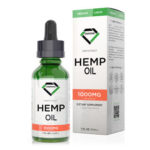
DIAMOND CBD OIL 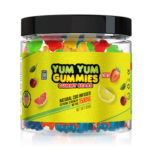
DIAMOND CBD GUMMIES (NO THC) 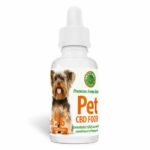
DIAMOND CBD PETS 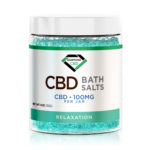
DIAMNOD CBD BATH SALTS 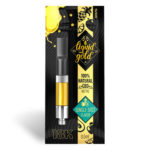
DIAMOND CBD VAPE CARTS 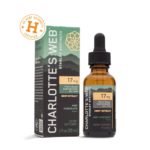
DIRECT CBD TINCTURE 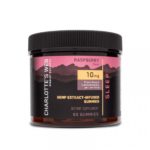
DIRECT CBD GUMMIES 
DIRECT CBD FOR DOGS 
PROSPER CBD CREAM FOR PAIN 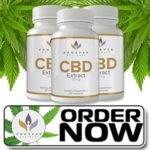
PROSPER CBD TABLETS
CBD. Ever Heard of it? I hope so. It is on every corner in every store everywhere. As popular as it is, there is still a lot of misinformation being hurled about so I hope this article will clear a few things up. Here are the Top 2 misconceptions about CBD:
- CBD is not safe. CBD is 100% natural and is extracted using any number of techniques, depending on a number of variables. Co2 gas is the most popular way and that is what we exhale every time we breathe. Completely inert.
- CBD gets you high. CBD is the second main natural chemical found in cannabis behind THC but is not the part that causes the stoner high or couch lock. That’s the job of THC. Please note all CBD and hemp products do contain microlevels of THC, but it is so minuscule you need not be concerned at all. Medications you pick up from your pharmacy are worse for you than CBD.
Despite the meteoric rise of its popularity, most people have no clue what they are doing when they purchase their CBD. Admittedly I was confused at first but if you stick with the basics it should be a piece of cake. Distinguishing between Modality and Bioavailability should help you keep things straight.
BIOAVAILABILITY
Bioavailability of a substance measures the average value of the rate of absorption and is expressed as the fraction (%) of an administered drug that reaches the systemic circulation. All modalities start off at 100% upon entry into the bloodstream. It is what is left over after it reaches its final destination that is being measured.
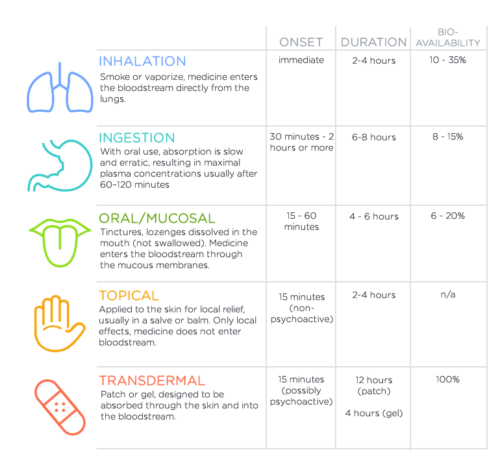
MODALITY
Modality simply refers to your chosen method of introducing the CBD into your bloodstream. Two of them are in the same general area on our bodies but how they differ greatly is where the CBD is actually absorbed into our bloodstream. That is what turned the lightbulb on for me.
If you think about it hard enough one can pretty much figure out most of the delivery options available but there may be a few that are not quite so obvious.
Inhalants
Vape carts & pens, concentrates, flower, distillates
Nasal Sprays
Oral
Oral CBD products are any of those product lines we either chew and then swallow or in the case of caplets eliminate the chewing step. It all ends up going through the digestive tract and is absorbed in the stomach and intestines. Slow delivery. Affects last relatively long. CBD Gummies and edibles are also in this category.
Sublingual
Sublingual (sub meaning under, lingual meaning tongue) CBD is absorbed through the tiny blood vessels found extremely close to the undersurface of the tongue and occurs fairly rapidly. Tincture & Oil Drops Under The Tongue, Lozenges
Topicals
Lotions, Creams & Balms applied to the skin.
There are 2 other honorable mentions that you probably should have knowledge of suppositories and intravenously.
So Joe, What The Hell Is It?
Cannabidiol (CBD) is one of the 104 naturally occurring compounds found in the oily resin of the cannabis Sativa flower, commonly called “buds,”. The [marijuana] flower is covered by tiny, mushroom-shaped “trichomes.” These trichomes protect the plant from the sun’s heat and ultraviolet radiation. The oil also possesses antifungal, insecticidal, and antibacterial properties that repel pests.
All mammals are wired with a specialized system called the endocannabinoid system (ECS), which is involved in regulating a variety of functions including sleep, appetite, pain and immune system response. That is where the CBD heads after it enters your body.
The body produces endocannabinoids, which are neurotransmitters that bind to cannabinoid receptors in your nervous system.
Studies have shown that CBD directly impacts the endocannabinoid receptor activity, reducing inflammation and interacting with other neurotransmitters. The end result is CBD improves the availability of the body’s natural chemical messengers to support the balance of activity in the body. This process optimizes our overall functioning and wellness including systems like mood, appetite, memory, sleep, and recovery.
The second main chemical in the cannabis plant is THC or Tetrahydrocannabinol. THC is the main psychoactive agent in cannabis and provides the “high” that’s often associated with marijuana. Ever wonder where the label “stoner” comes from? There is your answer. However, unlike THC, CBD is not psychoactive. This is why CBD is so appealing to so many for pain relief because it lacks the mind-altering effects of marijuana or certain pharmaceutical drugs.
HOW IS CBD OIL MADE?
To make CBD oil CBD is extracted from the cannabis plant, then diluted with a carrier oil like coconut or hemp seed oil. This extraction process is required to isolate the CBD and other beneficial components of the plant (such as terpenes) and makes them usable formsted into a variety of consumable products such as edibles, tinctures, gel caps, vape oil cartridges, topicals, beverages, and more. All of those methods of delivery into your system are required because it can provide relief for so many people, not everyone wants the same product. Variety is good.
OK, so we have extracted CBD from the cannabis plant using Co2 or whatever method and we have this beaker full of yellowish viscous oil. What do we do with it? How do we get that sticky, oily golden liquid into a consumable format?
7 health benefits to CBD supported and backed by scientific evidence.
1. Safe & Effective Pain Reliever
CBD gets the most attention because of its ability to reduce pain. In fact, it can reduce everything from the physical pain caused by arthritis to the neuropathic pain caused by multiple sclerosis. If you have an inflammatory disease that is causing you pain, then try some CBD oil and you should see that pain dissipating in no time.
Marijuana has been used to treat pain as far back as 2900 B.C. Several human studies have found that a combination of CBD and THC is effective in treating pain related to multiple sclerosis and arthritis.
2. Reduces Anxiety and Depression
Depression is the single largest contributor to disability worldwide, while anxiety disorders are ranked sixth.
Anxiety and depression are common mental health disorders that can have devastating impacts on health and well-being.
Both are usually treated with big pharm drugs, which can cause any number of side effects including drowsiness, agitation, insomnia, sexual dysfunction, and headaches.
CBD oil has shown promise as a treatment for both depression and anxiety with little or no side effects leading many who live with these disorders to take notice.
CBD oil has been used to safely treat insomnia and anxiety in children with post-traumatic stress disorder
A study was done on 24 people with a social anxiety disorder who received either 600 mg of CBD or a placebo before a public speaking test. The group that received the CBD had significantly less discomfort, anxiety, & cognitive impairment in their speech performance, compared to the placebo group. These qualities are linked to CBD’s ability to act on the brain’s receptors for serotonin, a neurotransmitter that regulates mood and social behaviors.
3. Can Alleviate Cancer-Related Symptoms
CBD may help reduce symptoms related to cancer and side effects related to cancer treatment, like nausea, vomiting and pain.
One study looked at the effects of CBD and THC in 177 people with cancer-related pain who did not experience relief from pain medication.
Those treated with an extract containing both compounds experienced a significant reduction in pain compared to those who received only THC extract.
CBD may also help reduce chemotherapy-induced nausea and vomiting, which are among the most common chemotherapy-related side effects for those with cancer.
Though there are drugs that help with these distressing symptoms, they are sometimes ineffective, leading some people to seek alternatives.
A study of 16 people undergoing chemotherapy found that a one-to-one combination of CBD and THC administered via mouth spray reduced chemotherapy-related nausea and vomiting better than standard treatment alone).
Some test-tube and animal studies have even shown that CBD may have anticancer properties. For example, one test-tube study found that concentrated CBD induced cell death in human breast cancer cells.
Another study showed that CBD inhibited the spread of aggressive breast cancer cells in mice .
Of course, additional studies on humans need to be conducted but preliminary results are very encouraging.
SYNOPSIS
Though CBD has been shown to help reduce symptoms related to cancer and cancer treatment, and may even have cancer-fighting properties, more research is needed to assess its efficacy and safety.
4. Viable Drug Addiction Treatment
CBD is believed to prevent a condition called insulitis that destroys pancreatic beta cells. Since insulitis is a big cause of Type I Diabetes, preventing insulitis can help prevent diabetes too. But for people who already have diabetes, CBD can lower the side effects of the disease like memory deficits and neuroinflammation.
5. Reduces Blood Pressure
Recent research has linked CBD with several benefits for the heart and circulatory system, including the ability to lower high blood pressure.
High blood pressure is linked to higher risks of a number of health conditions, including stroke, heart attack and metabolic syndrome.
Studies indicate that CBD may be a natural and effective treatment for high blood pressure.
One recent study treated 10 healthy men with one dose of 600 mg of CBD oil and found it reduced resting blood pressure, compared to a placebo.
The same study also gave the men stress tests that normally increase blood pressure. Interestingly, the single dose of CBD led the men to experience a smaller blood pressure increase than normal in response to these tests
Researchers have suggested that the stress- and anxiety-reducing properties of CBD are responsible for its ability to help lower blood pressure.
High blood pressure is a big cause of cardiovascular diseases, strokes, and heart attacks. If you were to take one dose of CBD oil each day, then you’d find yourself with lower blood pressure. That means you’d have a lesser chance of getting a heart attack, stroke, or heart disease.
6. Prevent Diabetes
CBD is believed to prevent a condition called insulitis that destroys pancreatic beta cells. Since insulitis is a big cause of Type I Diabetes, preventing insulitis can help prevent diabetes too. But for people who already have diabetes, CBD can lower the side effects of the disease like memory deficits and neuroinflammation.
7. Has Neuroprotective Properties
Researchers believe that CBD’s ability to act on the endocannabinoid system and other brain signaling systems may provide benefits for those with neurological disorders.
In fact, one of the most studied uses for CBD is in treating neurological disorders like epilepsy and multiple sclerosis. Though research in this area is still relatively new, several studies have shown promising results.
However, it’s important to note that some people in both these studies experienced adverse reactions associated with CBD treatment, such as convulsions, fever and diarrhea.
Though research is limited at this time, CBD has been shown to effectively treat symptoms related to epilepsy and Parkinson’s disease. CBD was also shown to reduce the progression of Alzheimer’s disease in test-tube and animal studies.
I realize there is a lot of information to digest, and that is perfectly fine. If there is one thing I would like for you to make sure you understand and that is the concept of bioavailability.
Many people mistakenly think that this and oral are the same thing. , but they are not even close.

